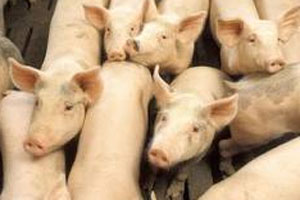Virulence factors of Haemophilus parasuis identified

Researchers of the CReSA have demonstrated that two trimeric autotransporters of Haemophilus parasuis are surface-exposed proteins that are involved in resistance to phagocytosis. These properties make these proteins promising vaccine candidates against Glässer’s disease.
Haemophilus parasuis is a member of the family Pasteurellaceae and a common inhabitant of the upper respiratory tract of healthy pigs. It is also known as the etiological agent of Glässer’s disease in swine, a systemic disease characterized by fibrinous polyserosytis, which causes high morbidity and mortality in piglets. H. parasuis can also produce pneumonia and sudden death. Glässer’s disease has gained considerable importance in recent years and it is recognized as one of the main causes of economic loss in the pig industry.
Little is known about the pathogenesis and the virulence factors of H. parasuis. Some putative virulence factors have been reported, including a family of trimeric autotransporters, designated virulence-associated trimeric autotansporters (VtaA). Trimeric autotransporters are present in Gram-negative bacteria and they have been widely confirmed as virulence factors in other bacteria. Like other virulent Pasteurellaceae, H. parasuis has evolved mechanisms to prevent phagocytosis as part of its pathogenic profile, as demonstrated in a previous study.
In order to identify the genes involved in this virulence mechanism, we constructed a genomic library of the highly virulent reference strain Nagasaki and clones from the library were selected by incubation with porcine alveolar macrophages. Two clones, containing vtaA8 or vtaA9,were selected by increase survival in the presence of macrophages.
Dr Virginia Aragon, principal investigator in this study, explains: “In this study, we provide evidence showing that two trimeric autotransporters of H. parasuis, VtaA8 and VtaA9, are surface-exposed proteins that are involved in resistance to phagocytosis. Since the production of mutants in H. parasuis is hindered by low and strain-dependent transformation efficiency, we decided to use the strategy of studying the function of specific genes in the heterologous host E. coli. Thus, the expression of the individual proteins in E. coli, although not enough to prevent phagocytosis, produced a delay in the phagocytosis process. This strategy allowed us also to circumvent the problem derived from the existence of several vtaA in H. parasuis, which suggests a functional redundancy”.
In conclusion, VtaA8 and VtaA9 are surface exposed proteins that play a role in phagocytosis resistance in virulent strains of H. parasuis. VtaA8 and VtaA9 share epitopes, and antibodies directed against one of these epitotes were able to opsonize heterologous virulent H. parasuis and render it susceptible to killing by macrophages. These properties make these proteins promising vaccine candidates against Glässer’s disease.
These results have been recently published in: Costa-Hurtado M, Ballester M, Galofré-Milà N, Darji A, Aragon V. VtaA8 and VtaA9 from Haemophilus parasuis delay phagocytosis by alveolar macrophages. Vet Res. 2012 Jul 27;43(1):57
Download the full paper here.
Source: CReSA
 Beheer
Beheer






 WP Admin
WP Admin  Bewerk bericht
Bewerk bericht